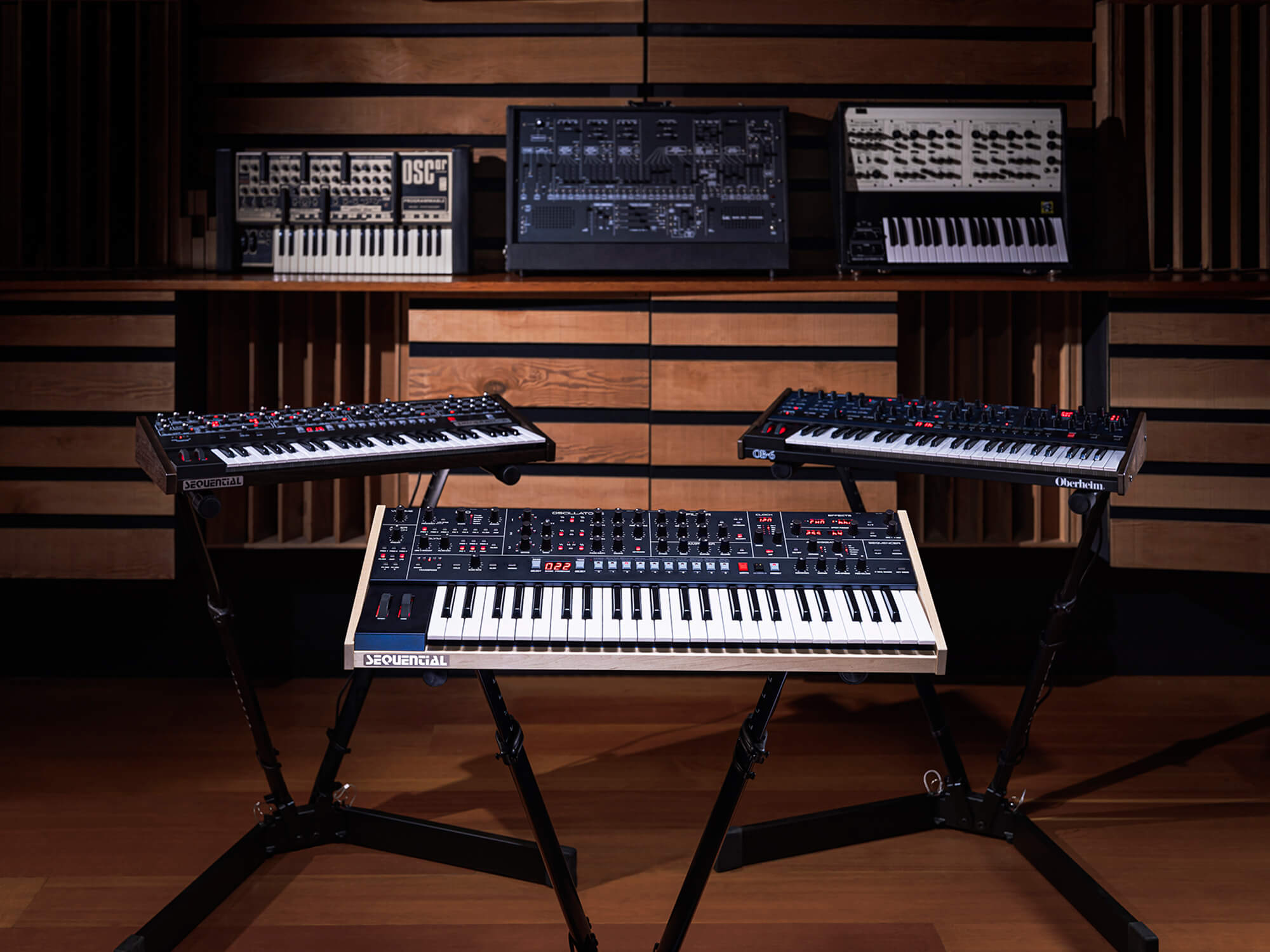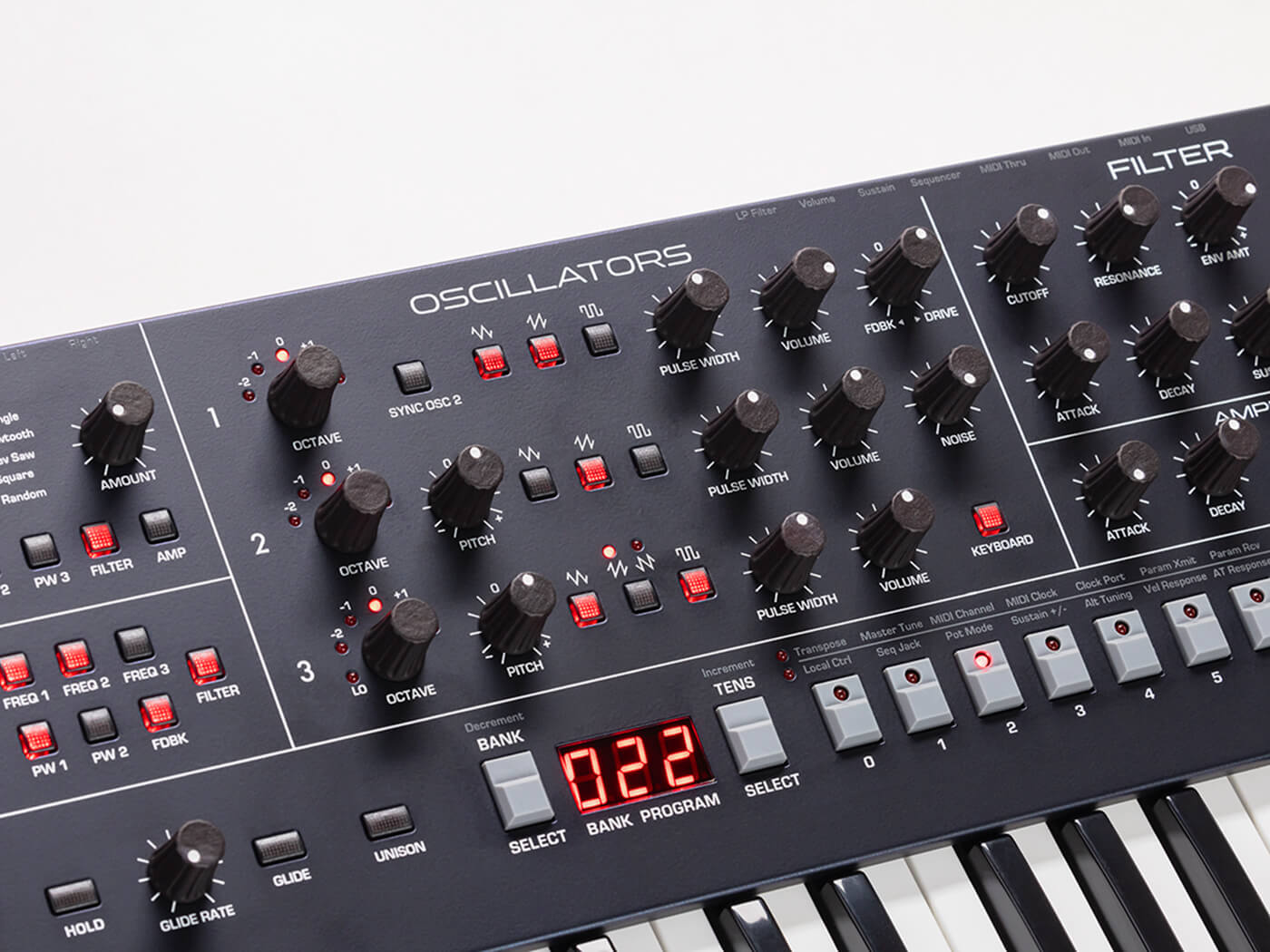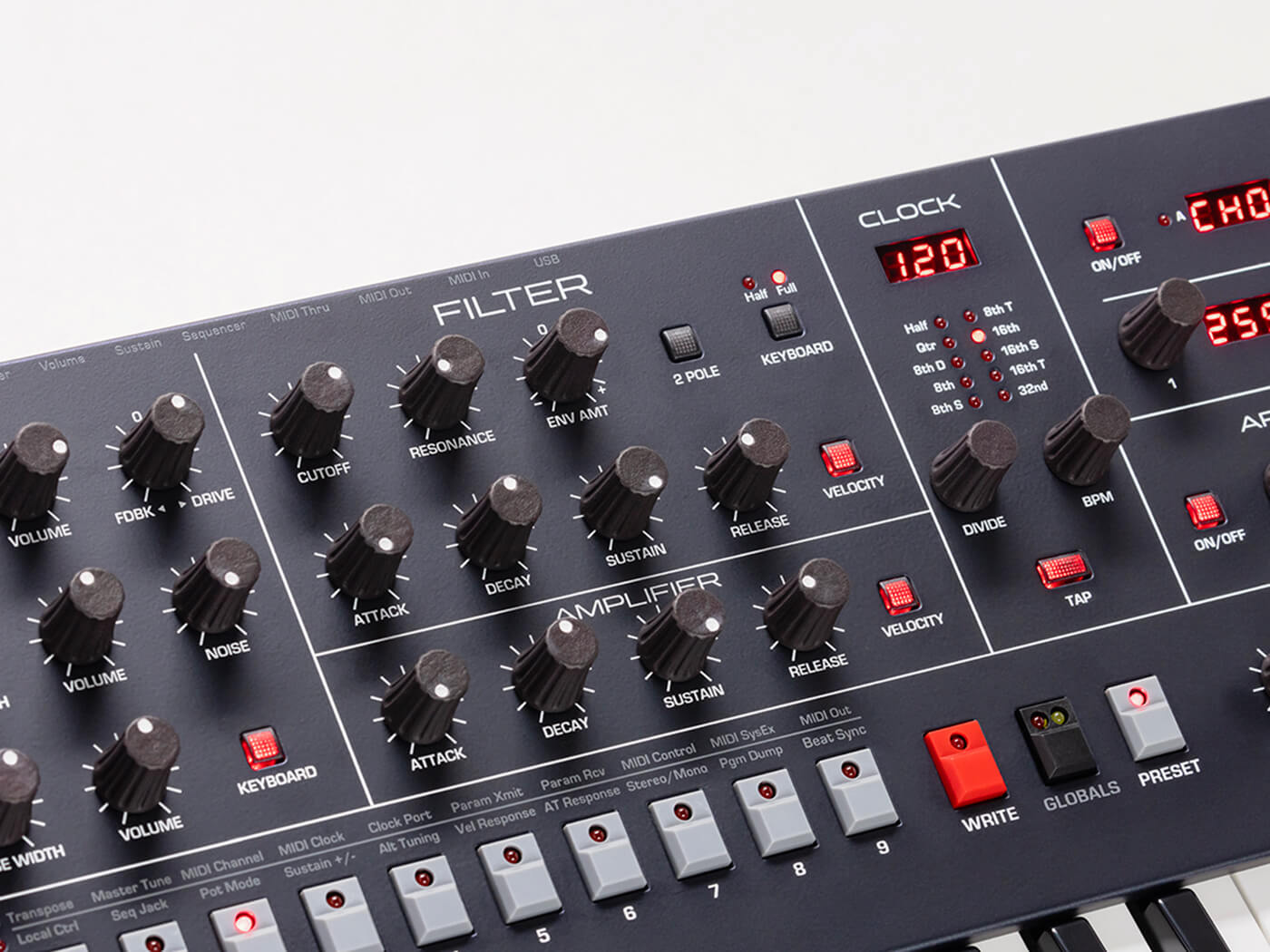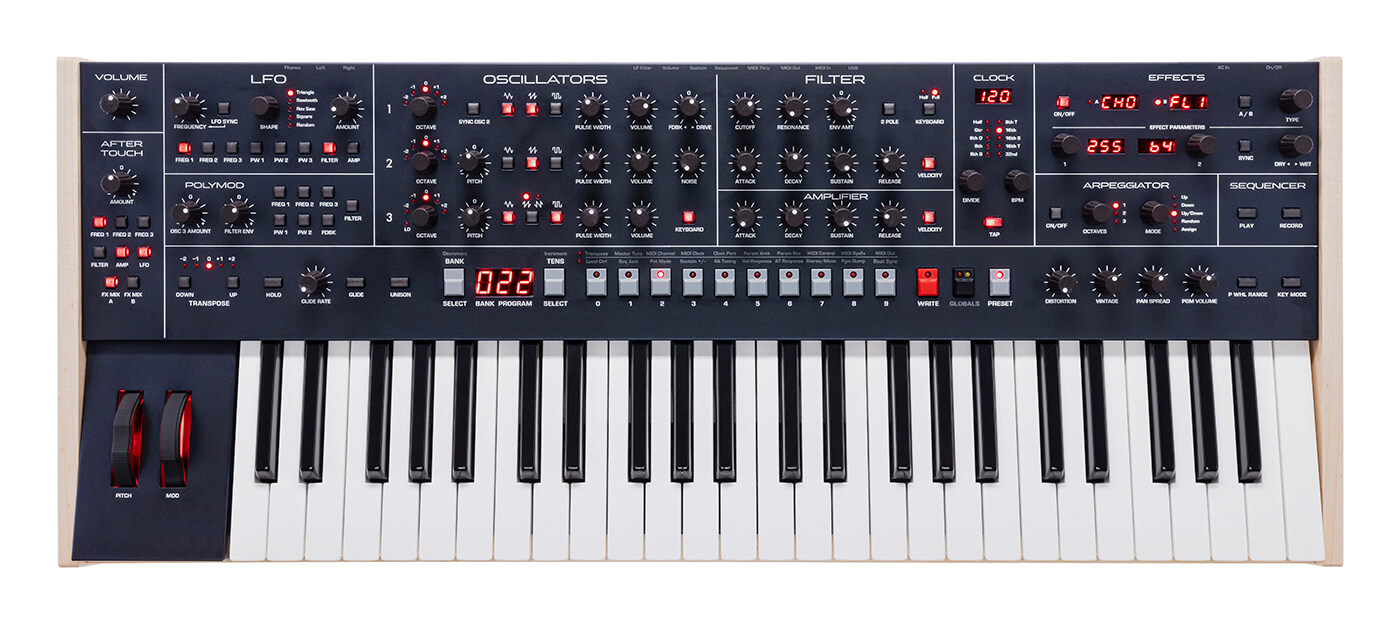Sequential Trigon-6 is Dave Smith’s final love letter to American synth icons
Dave Smith’s last instrument promises to combine the very best of its predecessors – and even nods to Moog’s most beloved synths

Sequential Trigon-6. Image: Sequential
Review Overview
Our rating
8
Our verdict
⊕ Highly accessible, spacious interface, ideal for all experience levels
⊕ Awesome Moog-style ladder filter
⊕ Handy companion app
⊕ Elements of both the Prophet-6 and OB-6
⊖ Aftertouch is a little heavy-handed
⊖ Could use more visual indication of modulation and LFOs on the panel
It was with a heavy heart that the music world bade farewell to Dave Smith in 2022, founder of Sequential Circuits and synth designer extraordinaire. Smith’s swan song, at that time, was considered to be the mammoth Oberheim OB-X8, a collaborative design with long-term friend and fellow pantheon member, Tom Oberheim, which was announced shortly before Smith’s passing, and released not long after. Little did we know, however, that Dave Smith had one last gift: the Trigon-6, a six-voice polyphonic beast that was “a passion project for Dave Smith,” in the words of Sequential product designer Carson Day.
Three is a magic number when it comes to the Trigon-6, which you may have already guessed from both its name and the triangle in its logo.
Sequential’s six-voice polyphonic subtractive synth has three analogue oscillators and completes a trinity of instruments that pay tribute to some of the most iconic designs in synthesis. It also happens to have a filter that first made an appearance on the Sequential Pro 3, but we’ll accept that’s a tenuous link. That filter, however, is key to understanding the Trigon-6’s place in the Sequential ecosystem, and in that trinity in particular.
The preceding two synths are, of course, the Prophet-6 and the OB-6. The supremely popular Prophet-6 is a tribute to the iconic Prophet-5 (which has since seen a reissue), taking cues from the Prophet-5’s oscillators and four-pole filter but adding a step sequencer, onboard effects and more. The OB-6 – a collaboration with Tom Oberheim that predates the OB-X8 – meanwhile, enlisted a classic Oberheim SEM state-variable filter and even endeavoured to recreate the sound of the original Oberheim phase shifter and ring modulator effects.
Sequential: check. Oberheim: check. Who could be the last giant of American synthesis to commemorate with a six-voice poly? You guessed it: Moog.
The Trigon-6 is Sequential’s love letter to Moog. It features a Moog-style ladder filter and a formidable trio of beefy oscillators, giving it more than a little in common with the layout and architecture of the Minimoog and the polyphonic Memorymoog, released just over a decade apart.
Perhaps it’s in our imagination, but something about the Trigon-6’s lighter wood finish feels highly Memorymoog-ish; it certainly eschews the darker finishes of previous Sequential instruments.

Just like the Prophet-6 and OB-6, the Trigon-6 features a four-octave, semi-weighted keyboard and measures around 32 inches in length. Another design aspect of the Prophet-6 and OB-6 channelled by the Trigon-6 is an almost purely single-layer, WYSIWYG panel, with no screen menu to speak of and certainly no menu diving. The Trigon-6 literally presents its functions on a plate – a refreshing thing to behold – with a humble, retro-looking (and rather bright) three-figure seven-segment display employed to show preset numbers, indicate global settings, and not much else.
Dual envelopes, a decent selection of digital effects (including a well-tuned bucket brigade-style delay and Oberheim-style phaser), a Prophet-6-esque Polymod section and a simple arpeggiator and sequencer are all on offer. Aftertouch is available, too, which is given its own panel section, but leaves a little to be desired physically – there’s almost no travel distance on the key before reaching full modulation value.
Overall, the build quality here is excellent, with bright LEDs, a solid feel and firm knobs; these even take some effort to turn, in some cases. The Trigon-6’s layout is truly classic and incredibly clear, though fair to say some visual indication of LFO rates would have been appreciated. It may carry a premium price tag, but in a vacuum would make an excellent synth for newcomers with a well-illustrated signal flow and quick and easy parameter edits.

The Moogfluence is writ large on the Trigon-6. Just like the Minimoog and Memorymoog, its three oscillators are arranged one above the other, with each getting its own Minimoog-like stepped octave knob (something not offered by the Prophet-6 or OB-6), tuning knobs for oscillators 2 and 3, an oscillator sync button, and a noise generator. Also similar to the aforementioned Moogs, oscillator 3 can dive to sub-audio frequencies to become an LFO, and has a handy button to toggle keyboard control on and off.
Let’s be clear; there are no complaints about this whatsoever. A triple-oscillator, Sequential take on Moog architecture is no doubt what many have been dreaming of, and the Trigon-6 delivers magnificently.
The Trigon-6 is far from a clone, however. For one thing, its filter is switchable between two- and four-pole modes, which is a lovely touch and offers a decent amount of control over its character.

Beyond combining “all of the best qualities of Sequential’s Prophet-6 and OB-6 synths” (in Carson Day’s words), the Trigon-6 excels in the realm of distortion, overdrive and feedback. A bipolar feedback/drive knob can dial in anything from subtle crunch to all-out, sonic mangling, toeing a line perfectly between the Minimoog trick of feeding its output back into its audio input and designs previously seen in synths like the Dave Smith Instruments’ Mopho. There’s also a distortion knob, as seen on the Prophet-6, which augments this with further harmonic overtones.
Thankfully, you can crank the levels of all three oscillators into the ladder filter, really squeezing them through the circuitry and pushing them up into its headroom. Dial in some component drift with the Vintage knob – something of a Sequential favourite that also found its way onto the OB-X8 – and the Trigon-6 does a great job of imitating all the warmth and character of an old-school instrument.
The Vintage knob is a worthy inclusion to the Trigon-6, but in many ways, this is a synth that manages to feel vintage anyway. It has a distinct character and real bite, perhaps more so than we’re used to on a Sequential instrument.
The Trigon-6 stands tall next to its celebrated six-voice peers; a fitting conclusion to the monumental legacy of one of the synth world’s most revered minds. Thank you, Dave.
Key features
- 6-voice polysynth
- 3 discrete voltage-controlled oscillators
- Switchable 2/4-pole Moog-style ladder filter per voice
- Polyphonic step sequencer
- Semi-weighted, 4-octave keyboard with velocity and aftertouch
- Vintage knob
- Onboard effects